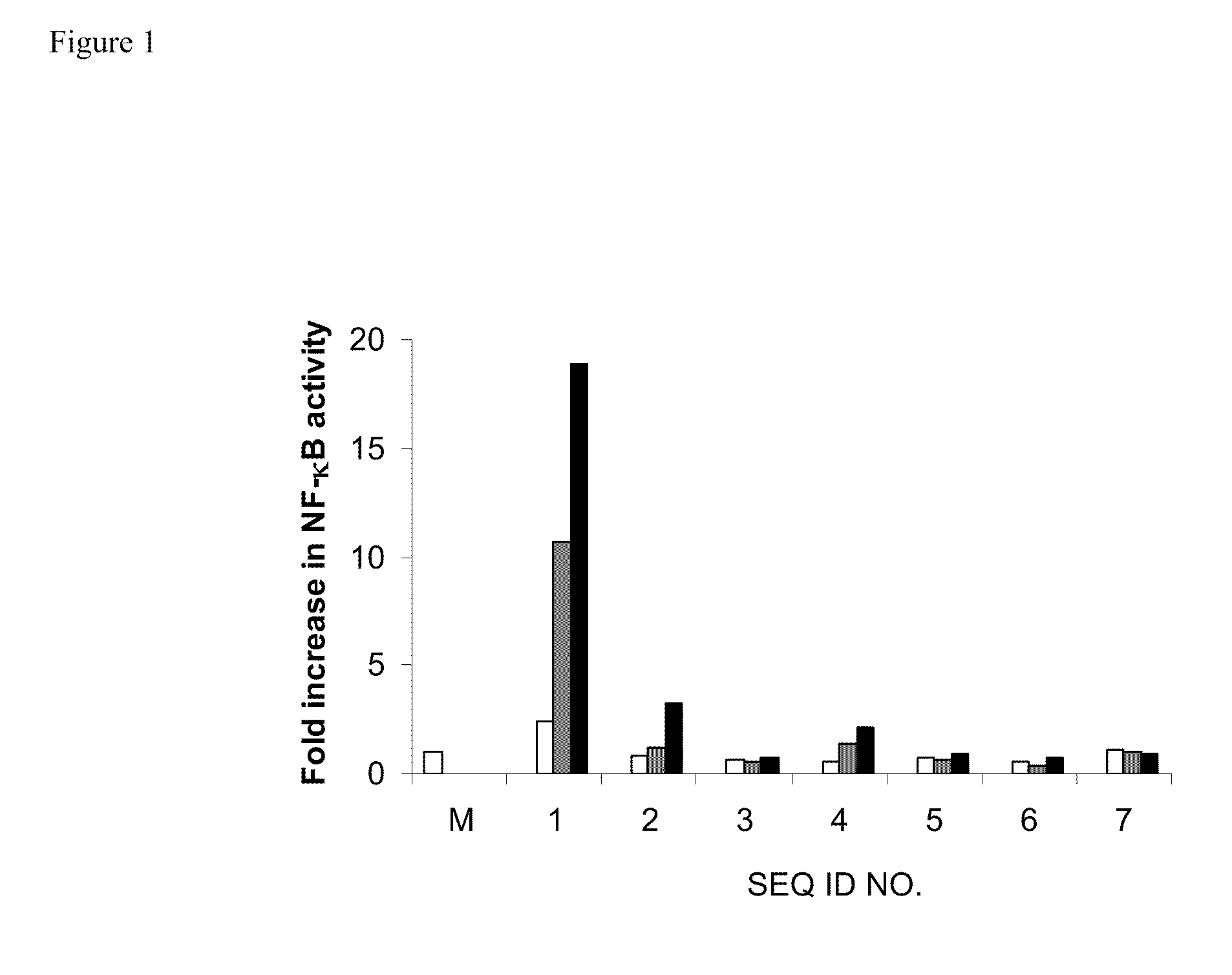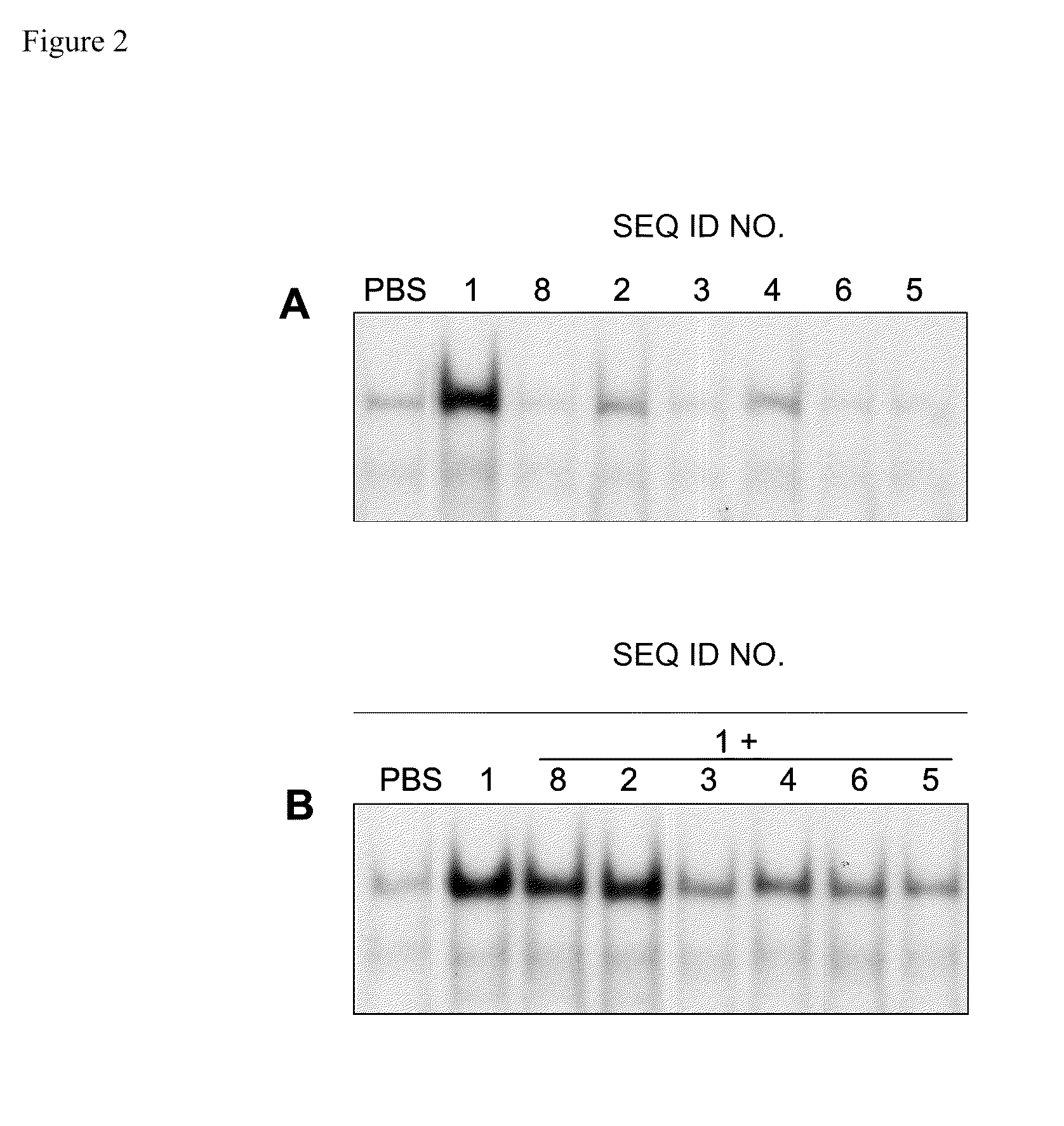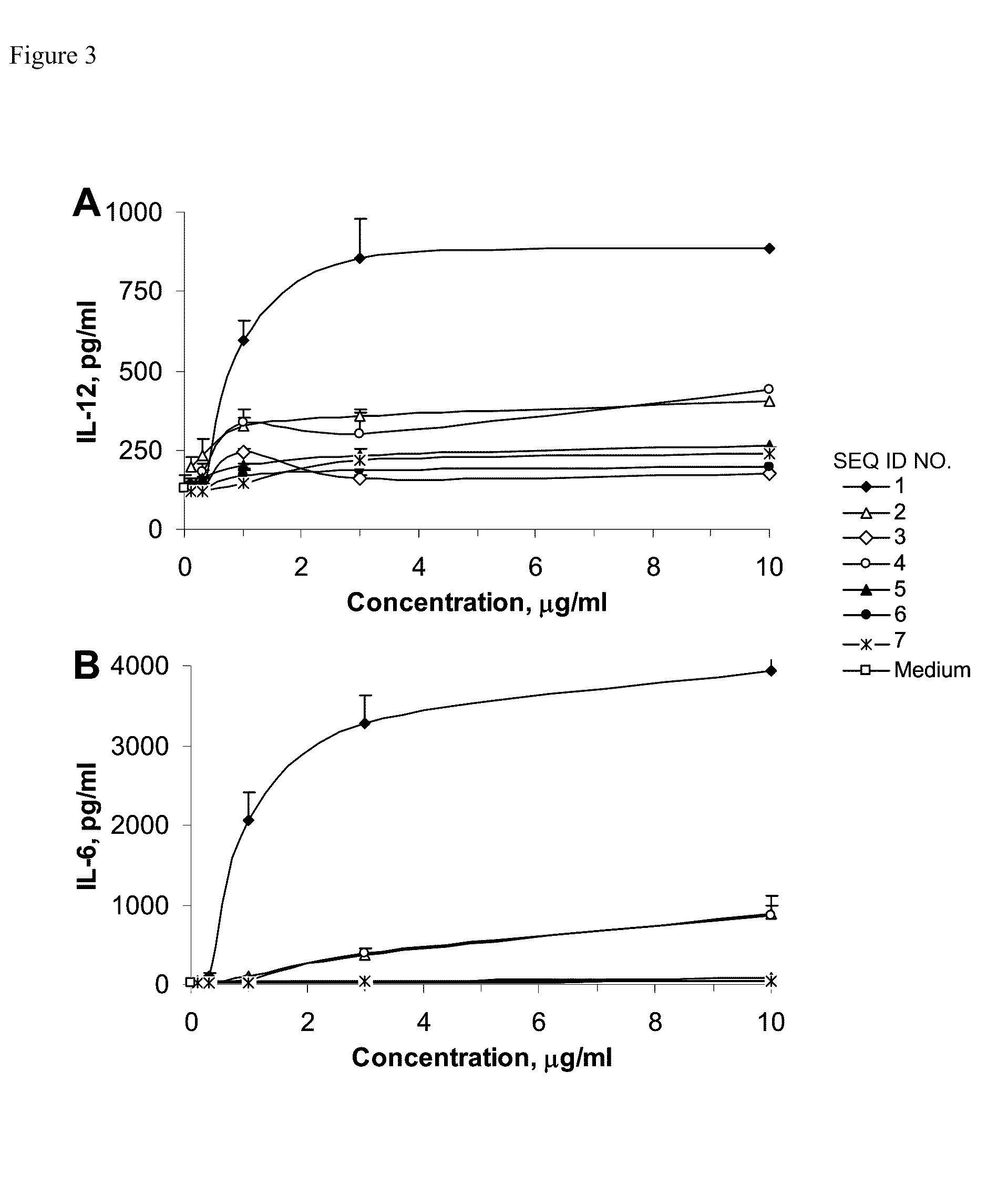Oligonucleotide-based compounds as inhibitors of toll-like receptors
a technology of oligonucleotide and toll-like receptor, which is applied in the field of immunotherapy, can solve the problems of inactive oligonucleotides without cg motifs or without methyl cg motif, and may exacerbate certain diseases through uncontrolled stimulation of the immune system through tlrs
- Summary
- Abstract
- Description
- Claims
- Application Information
AI Technical Summary
Problems solved by technology
Method used
Image
Examples
example 1
Synthesis of Oligonucleotides Containing Immune Regulatory Moieties
[0112]All oligonucleotide-based TLR antagonists containing a modified immune stimulatory motif and control oligonucleotides were synthesized according to standard procedures (see e.g. U.S. Pat. No. 7,276,489).
[0113]Oligonucleotides were synthesized on a 1 μM scale using an automated DNA synthesizer (Expedite 8909; PerSeptive Biosystems, Framingham, Mass.), following standard linear synthesis or parallel synthesis procedures (see e.g. FIGS. 5 and 6 of U.S. Pat. No. 7,276,489). All oligonucleotide-based TLR antagonists containing a modified immune stimulatory motif were characterized by capillary gel electrophoresis (CGE) or denaturing polyacrylamide gel electrophoresis (PAGE) and MALDI-TOF mass spectrometry (Waters MALDI microMX mass spectrometer) for purity and molecular mass, respectively. The purity of full-length oligonucleotides ranged from 95-99% with the remainder found to lack one or two nucleotides by HPLC, C...
example 2
Inhibition of TLR9 Stimulation
HEK293 Cells
[0114]HEK293 cells stably expressing TLR9 (Invivogen) were transiently transfected with reporter gene, Seap, (Invivogen) for 6 hr. Cells were treated with 0.5 μg / ml of control TLR9 agonist (SEQ ID NO 1) alone and with exemplary oligonucleotide-based TLR antagonists containing a modified immune stimulatory motif (SEQ ID NOs 2-6) at 0.1 μg / ml, 0.3 μg / ml or 1.0 μg / ml or negative control (SEQ ID NO 7) alone for 18 hr. TLR9-dependent reporter gene, NF-κB, expression was determined according to the manufacturer's protocol (Invivogen) and the results are expressed as fold increase in NF-κB activity. The results are shown in FIG. 1.
J774 Cells
[0115]Murine J774 macrophage cells (American Type Culture Collection, Rockville, Md.) were cultured in Dulbecco's modified Eagle's medium supplemented with 10% (v / v) fetal bovine serum (FBS) and antibiotics (100 IU / ml penicillin G / 100 μg / ml streptomycin). J774 cells were plated at a density of 5×106 cells / well i...
example 3
In Vivo Inhibition of TLR Activity by Oligonucleotide-Based TLR Antagonists containing a Modified Immune Stimulatory Motif
[0119]Female C57BL / 6 mice, five to six weeks old, (n=3) were injected subcutaneously with exemplary oligonucleotide-based TLR antagonists containing a modified immune stimulatory motif (SEQ ID NOs 2-6). For acute administration studies, C57BL / 6 mice were injected with exemplary oligonucleotide-based TLR antagonists containing a modified immune stimulatory motif at 2 mg / kg subcutaneously in the right flank. For inhibition experiments, 2 mg / kg of exemplary oligonucleotide-based TLR antagonists containing a modified immune stimulatory motif were administered in the right flank and 24 hr later 0.5 mg / kg control TLR9 agonist (SEQ ID NO 1) was administered subcutaneously in the left flank. Blood was collected by retro-orbital bleeding 2 hr after administration of the control TLR9 agonist and serum cytokines and chemokines were measured.
[0120]Serum samples from in vivo ...
PUM
| Property | Measurement | Unit |
|---|---|---|
| length | aaaaa | aaaaa |
| molecular weight | aaaaa | aaaaa |
| molecular weight | aaaaa | aaaaa |
Abstract
Description
Claims
Application Information
 Login to View More
Login to View More - R&D
- Intellectual Property
- Life Sciences
- Materials
- Tech Scout
- Unparalleled Data Quality
- Higher Quality Content
- 60% Fewer Hallucinations
Browse by: Latest US Patents, China's latest patents, Technical Efficacy Thesaurus, Application Domain, Technology Topic, Popular Technical Reports.
© 2025 PatSnap. All rights reserved.Legal|Privacy policy|Modern Slavery Act Transparency Statement|Sitemap|About US| Contact US: help@patsnap.com



